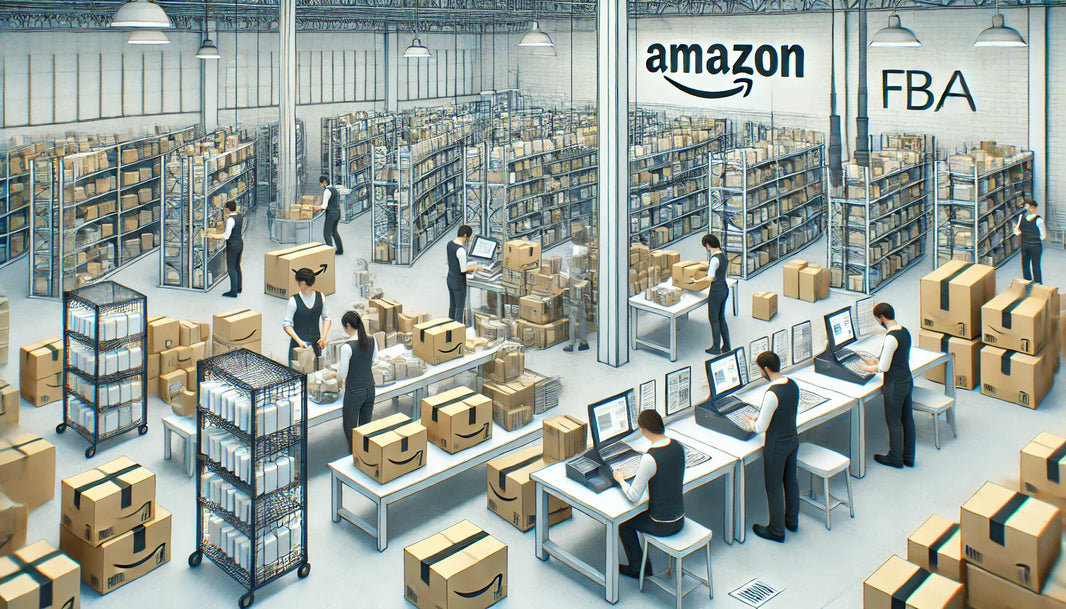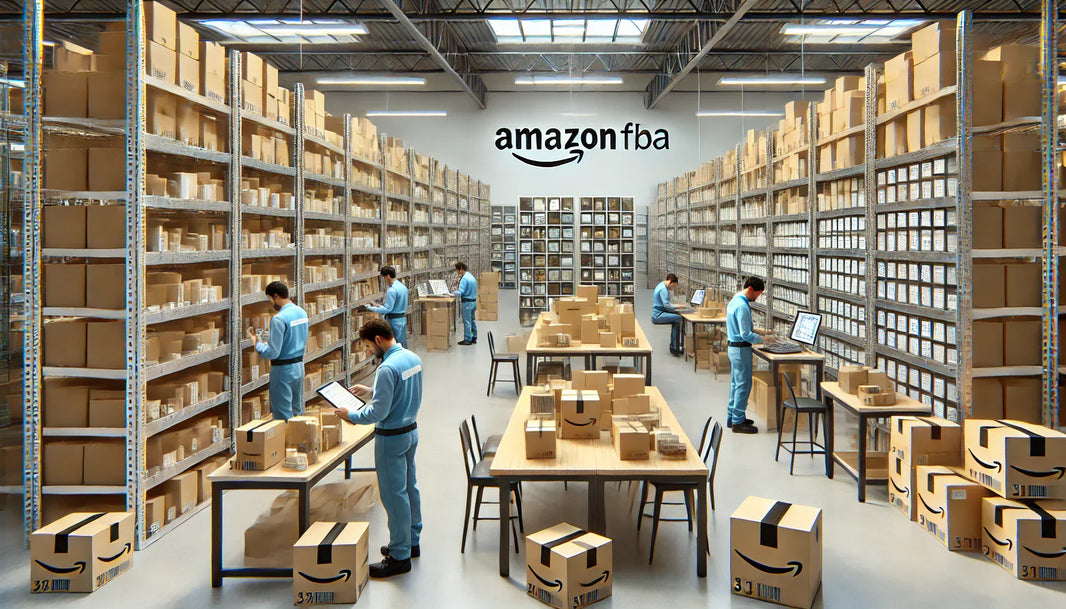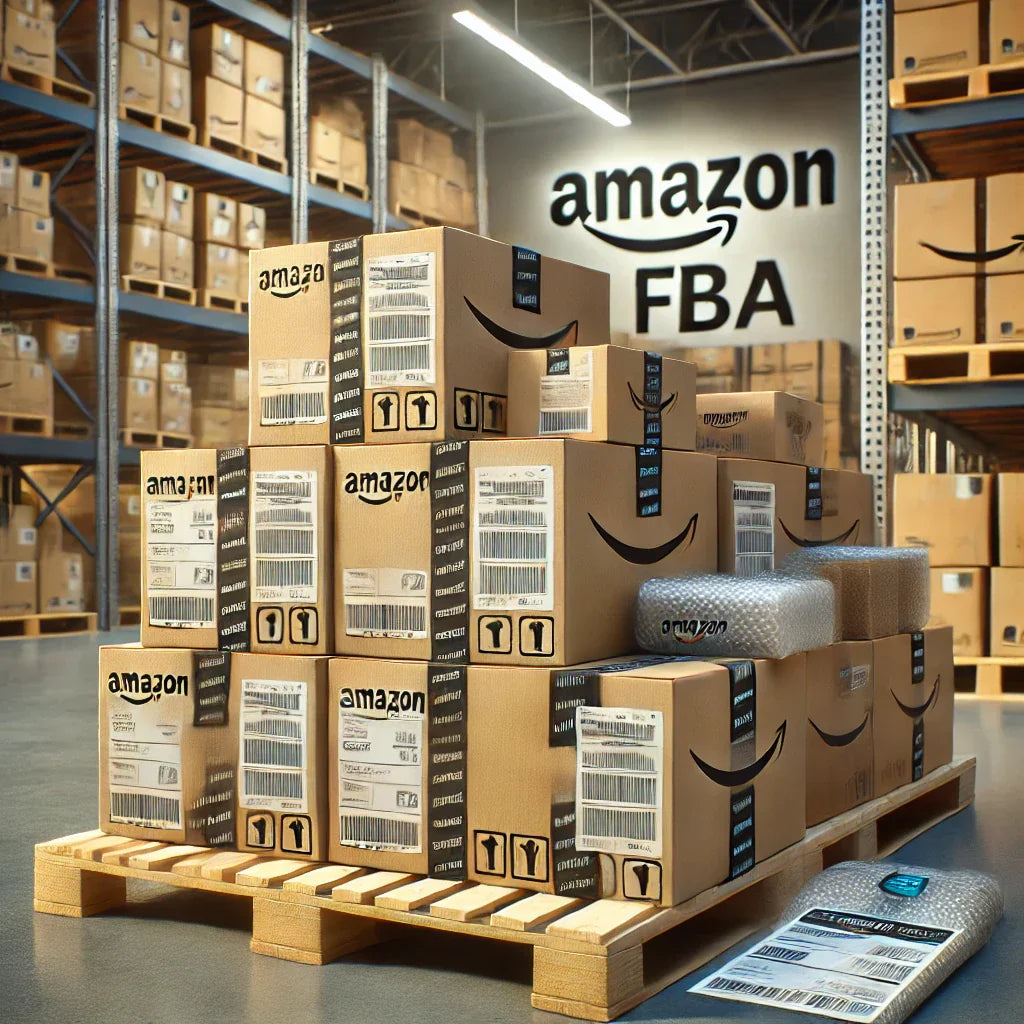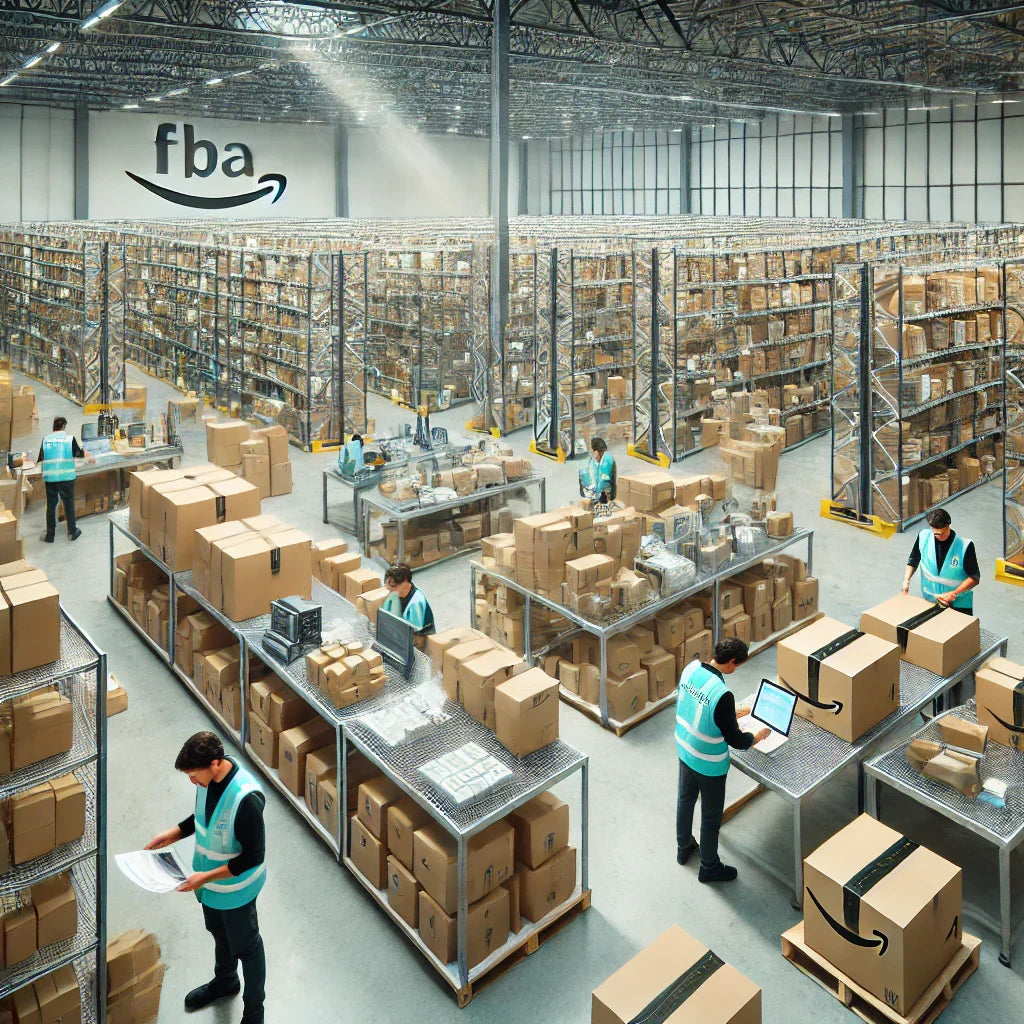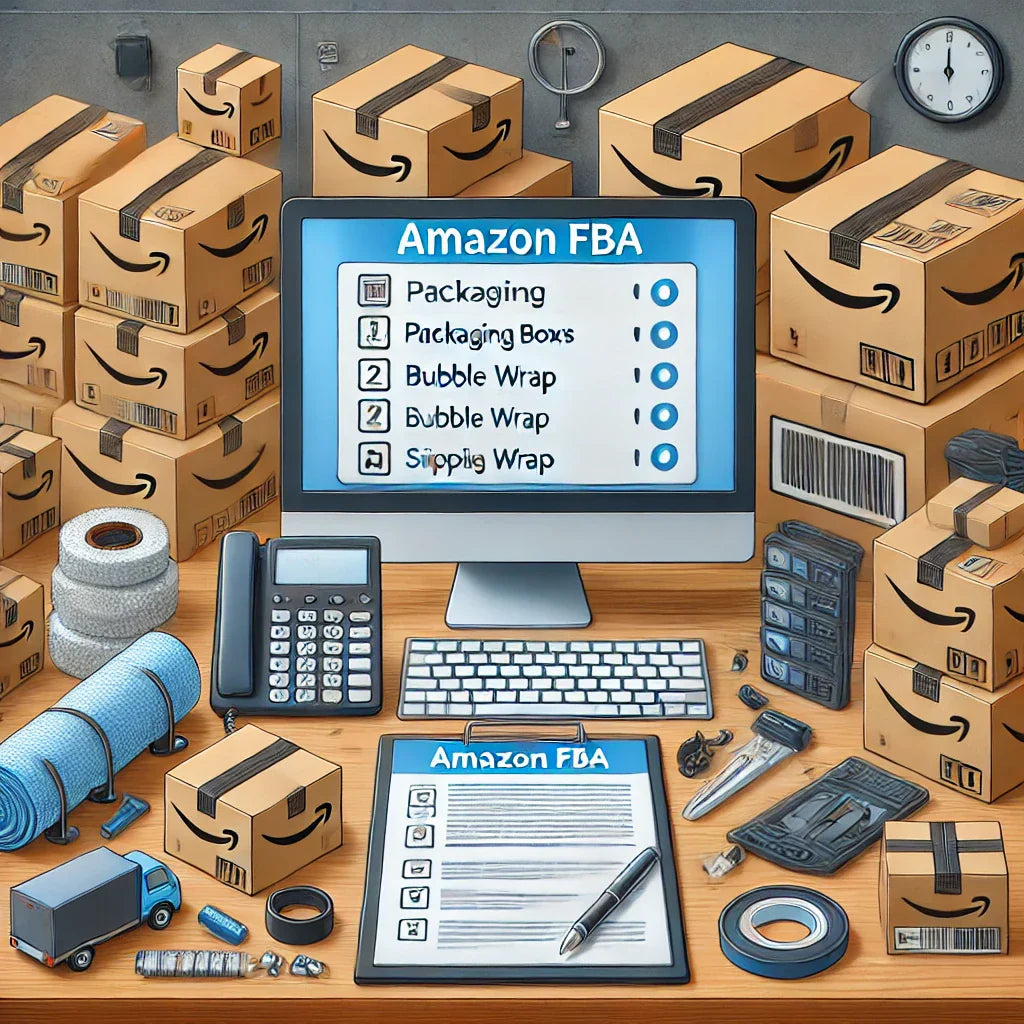When businesses seek to optimize their supply chain operations, understanding the distinctions between third-party logistics (3PL) and fourth-party logistics (4PL) solutions becomes essential. Both 3PL and 4PL providers offer unique advantages in managing and enhancing logistics functions, yet they differ in structure, scope, and strategic alignment. While 3PLs focus on handling specific logistics tasks such as warehousing, transportation, and distribution, 4PLs extend their reach further, often overseeing the entire supply chain on behalf of the client. In this article, we will explore the key differences between 3PL and 4PL, highlight their respective benefits and limitations, and provide insights into how businesses can assess which model best aligns with their operational needs and long-term goals.

The Basics: Defining 3PL and 4PL
The terms third-party logistics (3PL) and fourth-party logistics (4PL) are frequently used in the logistics industry, yet the differences between them are often misunderstood. To begin, it’s essential to have a clear definition of each model:
- 3PL (Third-Party Logistics) involves contracting out logistics activities such as warehousing, distribution, and transportation to an external provider. A 3PL provider is responsible for executing these specific operations but does not typically control or manage the entire supply chain. Many companies choose 3PLs to reduce costs, improve delivery times, and enhance logistical efficiency.
- 4PL (Fourth-Party Logistics) takes the outsourcing model further by assuming end-to-end responsibility for the entire supply chain. A 4PL provider acts as a strategic partner, coordinating with multiple logistics service providers and offering integrated supply chain solutions that cover all stages of the process—from procurement and storage to distribution and returns management. Unlike 3PLs, 4PL providers are more deeply involved in decision-making, technology integration, and supply chain strategy.
Understanding these distinctions is key for companies that are considering outsourcing their logistics operations and seeking the best approach to align with their business goals.
How 3PL Works: Structure and Benefits
A 3PL provider offers tactical support for specific segments of the supply chain, such as:
- Warehousing and Storage Solutions: 3PLs commonly provide warehousing services, which include the storage, handling, and sometimes assembly of goods.
- Transportation and Distribution: Many 3PL providers have extensive networks for transportation and distribution, making it easier to reach customers quickly and reliably.
- Inventory Management: Some 3PLs offer inventory management systems that help businesses monitor stock levels, predict demand, and reorder products as needed.
Benefits of Using a 3PL Provider
Using a 3PL provider allows companies to focus on core competencies by leaving logistical challenges to experts. Here are some key benefits:
- Cost Efficiency: By leveraging the resources and expertise of a 3PL provider, businesses can significantly reduce costs associated with warehousing, labor, and transportation.
- Scalability: 3PL providers offer flexibility and scalability, making it easier for companies to adapt to seasonal demands or fluctuating customer needs.
- Expertise and Technology: 3PLs stay up-to-date with the latest in logistics technology, such as tracking systems and inventory management tools, ensuring a high level of service.
How 4PL Works: Structure and Benefits
While 3PLs focus on tactical logistics tasks, a 4PL provider oversees the entire supply chain on a strategic level. Key responsibilities of a 4PL provider include:
- Supply Chain Strategy: A 4PL provider collaborates with the client to develop and implement a cohesive supply chain strategy.
- Coordination and Integration: Unlike 3PLs, 4PL providers coordinate with multiple 3PLs and other service providers, integrating processes across the supply chain for maximum efficiency.
- Technology Management: 4PL providers manage and integrate technology solutions, providing real-time visibility and actionable insights into the entire supply chain.
Benefits of Using a 4PL Provider
For companies seeking more comprehensive supply chain management, 4PLs offer several advantages:
- End-to-End Visibility: A 4PL provider offers insights into every stage of the supply chain, from procurement to delivery, enabling data-driven decisions and enhanced oversight.
- Risk Mitigation: 4PLs identify potential risks in the supply chain and proactively develop solutions, reducing the chances of disruptions.
- Strategic Partnership: Engaging with a 4PL provider fosters a deeper, long-term relationship that aligns closely with the company’s business objectives and growth strategies.
Key Differences Between 3PL and 4PL
Understanding the distinctions between 3PL and 4PL models can help businesses make informed decisions. Here are the primary differences:
- Scope of Service: 3PLs focus on specific logistics tasks, while 4PLs offer full supply chain management.
- Control and Coordination: 3PLs manage logistics activities independently, while 4PLs coordinate with multiple providers to create a seamless supply chain.
- Technology and Data Integration: 4PLs tend to be more technologically advanced, offering integrated systems that provide comprehensive supply chain visibility.
- Cost Structure: While 3PLs often provide a more affordable option, 4PLs deliver added value through strategic insights and end-to-end oversight, which can justify the higher cost for businesses that require comprehensive management.
How to Choose Between 3PL and 4PL
Deciding between a 3PL and a 4PL provider depends on various factors, such as company size, operational complexity, and long-term goals. Here are some considerations for selecting the right logistics model:
- Assess Business Complexity: For companies with complex supply chains, a 4PL provider may be more suitable due to their ability to oversee and optimize multiple layers of logistics. Smaller businesses with straightforward logistics needs may find a 3PL provider sufficient.
- Evaluate Current Resources and Infrastructure: Businesses with existing logistical resources may benefit from the supplementary services a 3PL offers. However, if a company lacks robust logistics infrastructure, a 4PL can serve as a more comprehensive partner.
- Consider Budget Constraints: 3PL providers generally offer more cost-effective solutions for companies on a tighter budget. Conversely, 4PLs may be more expensive but deliver added value for companies needing strategic oversight.
- Determine the Need for Strategic Control: For companies that require direct oversight and in-depth supply chain analysis, partnering with a 4PL can provide a competitive edge.

Benefits and Challenges of 3PL and 4PL Models
3PL Model: Advantages and Disadvantages
Advantages:
- Specialized Services: 3PLs allow businesses to access specialized services, such as cold storage for perishable goods.
- Cost Savings: Businesses often achieve significant savings by outsourcing to 3PLs rather than investing in their own logistics infrastructure.
- Flexibility: 3PLs allow businesses to adjust their logistics needs based on demand, making them ideal for seasonal businesses.
Challenges:
- Limited Control: Since 3PLs operate independently, businesses may have limited influence over day-to-day logistics activities.
- Potential for Fragmentation: If multiple 3PLs are used, it can lead to a fragmented supply chain, which may impact consistency and efficiency.
4PL Model: Advantages and Disadvantages
Advantages:
- Holistic Oversight: 4PL providers take a more holistic approach to supply chain management, overseeing every aspect and reducing logistical silos.
- Long-Term Partnership: The strategic relationship between a 4PL and the client fosters collaboration toward shared business objectives.
- Scalability for Growth: 4PL providers are well-suited for businesses with growth ambitions, offering scalable solutions that adapt to increased demand and expansion.
Challenges:
- Higher Costs: Due to the level of service and strategic input, 4PLs tend to be more expensive, which may not be suitable for every business.
- Dependency on the Provider: Relying on a 4PL for end-to-end logistics can create dependency, which may be challenging to unwind if the partnership ends.
Technology’s Role in 3PL and 4PL
Technology is at the heart of modern logistics and plays a pivotal role in both 3PL and 4PL models. Here’s how technology enhances each approach:
- Data Analytics and Predictive Modeling: 3PLs use data analytics to improve transportation routes and warehousing strategies. Meanwhile, 4PLs leverage predictive modeling for full supply chain optimization.
- Tracking and Visibility Tools: Advanced tracking tools enable 3PLs to provide updates on specific shipments, while 4PLs utilize integrated systems that offer real-time visibility across the entire supply chain.
- Automation: 4PL providers are more likely to employ automation technologies, such as robotic sorting or automated inventory management, creating efficiency gains across the logistics network.
- Customer Communication: Technology enhances the client experience by enabling both 3PL and 4PL providers to provide clients with easy-to-access updates, delivery estimates, and inventory insights.
Real-World Examples: 3PL and 4PL in Action
To understand how 3PL and 4PL function in practical scenarios, let’s look at real-world applications across different industries:
- E-commerce and Retail: The e-commerce sector often requires scalable, flexible solutions to handle fluctuating demand. Many e-commerce companies partner with 3PL providers to manage warehousing, packaging, and shipping. For instance, a small-to-midsize retailer may use a 3PL for handling seasonal spikes during the holiday shopping period without investing in additional infrastructure. On the other hand, larger retailers with complex international supply chains, like major global clothing brands, benefit from 4PL providers to oversee inventory levels across multiple regions, handle international logistics, and ensure regulatory compliance.
- Healthcare and Pharmaceuticals: In healthcare, logistics requires precision and adherence to strict regulatory guidelines. Many healthcare companies use 4PL providers to manage the end-to-end supply chain, ensuring cold-chain logistics for temperature-sensitive products and streamlining the distribution of medications to hospitals and pharmacies. For less complex needs, such as distributing medical supplies within a region, a 3PL provider might be a more suitable choice.
- Automotive Industry: The automotive industry operates on just-in-time manufacturing, meaning that parts must arrive at assembly plants exactly when needed to avoid production delays. Many automotive companies rely on 4PL providers for complex supply chain management, overseeing parts procurement, inbound logistics, and inter-facility transfers. Smaller manufacturers in the automotive supply chain might engage with a 3PL provider to manage specific warehousing or transportation needs without the comprehensive oversight that a 4PL provides.
Case Study: The Transformation from 3PL to 4PL in a Global Electronics Company
A global electronics company with an extensive international market once relied on multiple 3PL providers for warehousing and distribution in various regions. As the company grew, managing logistics through several independent 3PLs became challenging due to inconsistencies, visibility issues, and lack of supply chain integration. The company decided to transition to a 4PL provider that would oversee the entire supply chain, coordinating multiple 3PLs and logistics partners globally.
The results of this shift were significant: the company saw an improvement in visibility across its supply chain, with a centralized platform allowing for real-time tracking of inventory levels and shipping status. Furthermore, the 4PL provider's integrated data analytics identified bottlenecks and opportunities for cost savings, leading to a reduction in overall logistics costs. This transformation allowed the electronics company to focus more on product innovation and market expansion, confident that its logistics operations were under expert management.
Industry-Specific Benefits: Why Certain Sectors Lean Toward 3PL or 4PL
Different industries have distinct logistical needs, which influence whether they choose a 3PL or 4PL provider:
- Consumer Goods: Consumer goods companies, especially those in the fast-moving consumer goods (FMCG) sector, often rely on 3PLs to handle warehousing and distribution to stores and customers. Due to the high volume of goods and rapid turnover, these companies benefit from the scalability and flexibility offered by 3PLs. However, larger consumer goods corporations may lean toward 4PLs for managing extensive supply chains that involve international shipping, multiple manufacturing sites, and distribution centers across various regions.
- Energy and Utilities: The energy sector, including oil and gas, is highly complex and involves intricate logistics that benefit from 4PLs. With their ability to manage procurement, storage, and transportation of large equipment and hazardous materials, 4PL providers ensure seamless supply chain operations while handling regulatory compliance, safety standards, and risk management.
- Technology and Electronics: Technology companies with global operations frequently work with 4PLs to manage complex supply chains. A 4PL provider can handle component sourcing from multiple countries, coordinate manufacturing and assembly, and manage inventory distribution. Smaller technology companies, particularly startups, often begin with 3PLs to handle straightforward warehousing and delivery.
- Fashion and Apparel: Fashion brands tend to face seasonal demand and require quick responses to changing trends, making 3PLs a favorable option for many companies in this industry. However, high-end fashion brands with global distribution networks may engage with 4PL providers to oversee the entire supply chain, ensuring quality control, efficient logistics, and on-time deliveries worldwide.

Factors to Consider for Effective 3PL and 4PL Management
To make the most of a 3PL or 4PL partnership, businesses should consider the following:
- Strategic Alignment: It’s essential to ensure that the logistics provider aligns with your company's long-term goals. A 4PL provider that invests in data analytics and supply chain transparency, for example, can offer insights that align with strategic growth initiatives, whereas a 3PL might focus more on meeting immediate logistics needs.
- Technology Integration: The effectiveness of a logistics partnership often depends on the technology that the provider uses. Businesses should look for 3PLs or 4PLs with systems compatible with their own, such as inventory management, tracking, and reporting software, to ensure a seamless exchange of information and enhanced visibility.
- Communication and Reporting: Transparent and consistent communication is critical for successful logistics management. Both 3PL and 4PL providers should offer clear reporting structures, regular updates, and a dedicated point of contact to address any operational issues.
- Customization and Flexibility: The logistics provider should offer solutions tailored to the company’s unique needs. For instance, an e-commerce company might require specific fulfillment options, while a pharmaceutical company might need support for temperature-controlled storage.
Future Trends in 3PL and 4PL Services
The logistics industry is continually evolving, with trends shaping the future of both 3PL and 4PL services. Here are some of the most significant trends that will likely impact the industry:
- Sustainable Logistics: Increasingly, companies are seeking logistics solutions that minimize environmental impact. Both 3PL and 4PL providers are investing in green logistics practices, such as reducing emissions through route optimization, using eco-friendly packaging, and incorporating electric vehicles into their fleets. 4PLs, in particular, can provide sustainability insights across the supply chain, helping businesses reach eco-friendly goals.
- Automation and Robotics: Automation is transforming the logistics sector, with 3PL and 4PL providers incorporating robotics in warehouses, using drones for delivery, and employing automated picking systems. These innovations enhance efficiency, reduce labor costs, and accelerate the fulfillment process. For businesses aiming to adopt cutting-edge automation technology, 4PL providers are often better positioned to offer comprehensive solutions.
- Artificial Intelligence and Data Analytics: AI and analytics play a crucial role in optimizing logistics, allowing providers to predict demand, enhance route planning, and reduce operational costs. While 3PLs may use AI for specific tasks like demand forecasting, 4PLs leverage AI across the entire supply chain, providing a holistic view that enables smarter decision-making and enhanced resilience.
- Blockchain for Transparency: Blockchain technology is gaining traction as a tool for improving transparency and security in the supply chain. By using blockchain, 4PL providers can offer clients real-time tracking and verification of products, helping prevent fraud and improve customer trust.
- Enhanced Customer Experience: As customer expectations continue to rise, logistics providers are focusing on ways to improve the end-user experience. Both 3PLs and 4PLs are investing in last-mile delivery solutions and optimizing delivery times to meet demand for faster and more reliable service. In particular, 4PL providers can coordinate multiple logistics partners to create a seamless delivery experience for customers.
Evaluating the Costs and Return on Investment (ROI) for 3PL and 4PL
Determining the ROI of a 3PL or 4PL provider involves assessing both direct and indirect benefits. Here’s how companies can evaluate the financial impact of each model:
- Direct Cost Savings: 3PLs often provide significant savings by consolidating storage, reducing labor costs, and leveraging existing infrastructure. The savings from outsourcing specific logistics tasks can improve cash flow, making 3PLs attractive for companies with budget constraints.
- Efficiency Gains: 4PLs can deliver efficiency gains by eliminating redundancies and optimizing each aspect of the supply chain. For companies with high logistics complexity, the return on a 4PL investment often comes from improved processes, reduced delays, and lower error rates.
- Long-Term Value: While 4PLs may involve a higher upfront cost, the long-term value they provide through end-to-end optimization, strategic insights, and enhanced visibility can outweigh these expenses for companies with larger or more complex supply chains.
- Scalability: A 4PL provider offers scalability as a company grows, whereas a 3PL provider may require additional resources or a transition to another provider when a business reaches certain thresholds. For rapidly expanding companies, a 4PL partnership can save costs related to provider transitions and infrastructure expansion.
Risk Management in 3PL and 4PL Services
Risk management is a pivotal aspect of logistics, particularly when outsourcing. Both 3PL and 4PL providers bring different capabilities to mitigating risks within the supply chain, including operational, financial, and strategic risks.
Operational Risks
In the 3PL model, operational risk management focuses on specific logistics tasks such as warehousing, transportation, and distribution. For example:
- Warehouse Management Systems (WMS): Many 3PL providers utilize WMS technology to reduce operational risks related to inventory management, picking errors, and order accuracy. A well-integrated WMS minimizes product shortages, reduces delays, and ensures accurate stock records.
- Transportation Risks: 3PLs actively manage transportation risks by ensuring timely delivery, tracking shipments, and maintaining delivery reliability. In sectors like retail, where on-time delivery is critical, 3PLs optimize routes, select reliable carriers, and monitor vehicle conditions to minimize disruptions.
On the other hand, 4PL providers approach risk with a broader perspective by managing end-to-end risks across the entire supply chain:
- Strategic Risk Assessment: 4PLs regularly assess and mitigate risks related to supply chain disruptions, regulatory changes, and currency fluctuations (for international logistics). They are especially effective at handling unexpected disruptions, such as natural disasters or political instability, by re-routing supply lines or adjusting procurement strategies.
- Compliance and Safety: A 4PL provider overseeing the entire supply chain will incorporate compliance checks across all vendors and suppliers. For instance, in industries like pharmaceuticals or food and beverage, where strict regulatory compliance is mandatory, a 4PL can prevent costly fines and product recalls by enforcing consistent safety standards.
Global Expansion and the Role of 3PL and 4PL
As businesses expand internationally, logistics become increasingly complex. Deciding between a 3PL and a 4PL provider plays a crucial role in facilitating a smooth transition into new markets.
The 3PL Advantage for Regional Expansion
For businesses seeking to enter a new region with limited operations, 3PL providers often offer a cost-effective way to establish a presence without committing to extensive infrastructure investments. A 3PL partner provides:
- Localized Expertise: Many 3PL providers have deep knowledge of regional logistics, from port regulations to local transportation networks. They streamline the process of entering new markets by navigating customs requirements, local taxation, and language barriers.
- Flexibility: With a 3PL partner, businesses can test new markets with minimal risk, scaling operations based on performance. This allows them to control expansion costs and adjust logistics operations based on demand fluctuations in the new region.
The 4PL Edge for Global Operations
In contrast, a 4PL model is often ideal for companies that operate on a global scale and require a unified logistics strategy. A 4PL provider brings consistency and visibility to complex, multi-country operations, delivering benefits such as:
- Centralized Control with Local Adaptability: 4PLs use technology to create a centralized dashboard that tracks logistics activities across regions, enabling managers to monitor progress and make adjustments in real-time. This approach is especially beneficial for global retailers, technology firms, or manufacturing giants that must manage supply chains across multiple continents.
- Supply Chain Integration: A 4PL can oversee and synchronize suppliers, warehouses, and distribution centers in various countries, ensuring efficiency and cost control. By centralizing data from all logistics activities, a 4PL provider enhances decision-making across the entire supply chain, improving response times and overall operational performance.
![]()
Flexibility vs. Control: A Key Difference Between 3PL and 4PL
One of the primary factors in choosing between a 3PL and 4PL model is the balance between flexibility and control. Each model offers distinct advantages in terms of operational control and adaptability.
Flexibility in the 3PL Model
3PL providers are typically more flexible in handling specific logistics tasks, making them ideal for businesses with seasonal demand or fluctuating order volumes. Key advantages of flexibility within the 3PL model include:
- Scalable Services: 3PL providers are equipped to quickly scale operations up or down, allowing businesses to manage sudden demand surges without increasing fixed costs.
- Customization for Specific Tasks: Since 3PLs focus on particular logistics segments, companies can select services tailored to their immediate needs, whether that’s transportation, warehousing, or inventory management.
Control in the 4PL Model
In contrast, 4PL providers offer more comprehensive control over the supply chain. For businesses seeking strategic alignment, end-to-end visibility, and control over complex logistics networks, the 4PL model offers:
- Strategic Oversight: With a 4PL partner, companies gain control over supply chain decision-making without needing to manage every detail of logistics operations. This is beneficial for large organizations that want to align logistics closely with business objectives.
- Enhanced Supply Chain Consistency: A 4PL provider ensures consistency by establishing unified policies and procedures across all aspects of the supply chain. For example, in a global consumer goods company, a 4PL might standardize warehouse processes, distribution protocols, and quality controls across all locations to maintain product quality and brand reputation.
Industry-Specific Considerations for 3PL and 4PL Selection
The choice between a 3PL and 4PL provider often hinges on industry-specific logistics demands, including storage conditions, regulatory requirements, and customer expectations.
Retail and E-commerce
In retail and e-commerce, fast delivery times and high service reliability are paramount. Companies in this sector must fulfill customer expectations for same-day or next-day delivery. Here’s how 3PL and 4PL solutions fit:
- 3PL Fit: 3PL providers with extensive distribution networks are ideal for small to medium-sized e-commerce companies. Their warehousing and distribution services ensure goods are stored and shipped quickly to meet customer demands.
- 4PL Fit: For large retail businesses, especially those with international operations, a 4PL provider can coordinate supply chains across borders. A 4PL will often integrate with multiple 3PLs and utilize analytics to optimize inventory placement, reducing lead times and shipping costs.
Healthcare and Pharmaceuticals
The healthcare and pharmaceutical industries require stringent logistics standards to maintain product quality and regulatory compliance. For instance, medicines and medical devices often demand temperature-controlled storage, timely deliveries, and careful handling.
- 3PL Fit: Smaller pharmaceutical companies may use 3PLs for specialized services like temperature-controlled storage or last-mile delivery. Many 3PLs have facilities equipped with climate control to ensure that products remain within required temperature ranges during storage and transit.
- 4PL Fit: Large healthcare organizations often prefer 4PL providers that manage the entire supply chain. By overseeing logistics end-to-end, a 4PL can coordinate multiple suppliers, monitor compliance, and implement risk management strategies to prevent disruptions.
Manufacturing
Manufacturing logistics requires precise timing and coordination, particularly in industries with just-in-time (JIT) production, such as automotive and electronics.
- 3PL Fit: Many smaller manufacturers benefit from 3PLs that manage individual logistics tasks, such as inbound transportation of parts or outbound delivery of finished goods. This approach helps maintain cost efficiency while ensuring punctual delivery of raw materials.
- 4PL Fit: Large-scale manufacturers often choose 4PL providers to synchronize supply chains. By managing procurement, warehousing, and distribution, a 4PL can streamline the entire production process, reduce stockouts, and ensure production continuity.
Comparative Analysis of Costs and Value for 3PL vs. 4PL
When it comes to budgeting for logistics, companies must weigh the costs of 3PL and 4PL services against the value they bring in terms of efficiency, scalability, and control.
Initial Investment and Cost Structure
- 3PL Cost Structure: 3PL providers often operate on a cost-per-transaction basis, which makes them attractive for companies with limited budgets or straightforward logistics needs. This pay-as-you-go structure allows businesses to control costs by choosing specific services, such as warehousing or transportation, without committing to a full-service logistics package.
- 4PL Cost Structure: Engaging a 4PL provider involves a higher upfront investment, as these providers typically charge a management fee for overseeing the entire supply chain. However, this fee often includes value-added services like data analytics, risk management, and strategic planning, which justify the cost for businesses with complex logistics needs.
Long-Term Value and Return on Investment (ROI)
- ROI from 3PL: 3PL partnerships provide immediate cost savings by eliminating the need for infrastructure investment and minimizing labor costs. These partnerships also improve efficiency for businesses with fluctuating demand, maximizing ROI in the short term.
- ROI from 4PL: The ROI from a 4PL provider is usually realized over the long term, especially in industries where strategic oversight and integration bring substantial gains. Companies that rely on 4PLs benefit from enhanced supply chain visibility, reduced disruptions, and better alignment between logistics and overall business goals. For instance, a large multinational corporation using a 4PL can save significantly on logistics costs by optimizing its supply chain end-to-end.

Leveraging Technology and Data in 3PL and 4PL Services
The role of technology in the logistics industry has expanded rapidly in recent years, driving significant improvements in transparency, efficiency, and accuracy. Both 3PL and 4PL providers are capitalizing on digital advancements to streamline processes, enhance customer satisfaction, and meet evolving business needs. However, their approaches differ due to the scope of each model.
Internet of Things (IoT)
For 3PLs: IoT is commonly used by 3PL providers to improve tracking within their facilities and during transit. For instance, IoT sensors can monitor temperature, humidity, and location, which is particularly beneficial for industries that require temperature-controlled environments, such as pharmaceuticals and food. By integrating IoT, 3PLs can offer real-time visibility into the status of shipments, helping clients proactively manage inventory.
For 4PLs: 4PL providers implement IoT across the entire supply chain, enabling comprehensive tracking from the procurement phase through to the final delivery. For example, in industries like automotive manufacturing, IoT can track parts as they move from supplier to assembly plant, allowing for real-time inventory monitoring. This end-to-end visibility supports better decision-making, enabling companies to address issues like bottlenecks or delays as soon as they occur.
Big Data and Predictive Analytics
For 3PLs: Big data analytics enable 3PL providers to make data-driven decisions, such as optimizing transportation routes and forecasting seasonal demand spikes. By analyzing historical data, 3PLs can adjust delivery schedules or choose cost-effective shipping routes, resulting in improved efficiency and cost savings for their clients.
For 4PLs: The broader scope of 4PL services allows them to apply predictive analytics to the entire supply chain. By examining data from multiple suppliers, warehouses, and distribution channels, 4PL providers can anticipate risks and prepare alternative strategies. For instance, if predictive analysis suggests potential delays due to weather conditions, a 4PL provider can reroute shipments to ensure timely delivery. This proactive approach reduces operational risks and enhances overall supply chain resilience.
Artificial Intelligence (AI) and Machine Learning
For 3PLs: AI algorithms help 3PL providers automate routine tasks like demand forecasting and order processing. Machine learning models analyze patterns in historical data, enabling 3PLs to forecast demand accurately and reduce inventory holding costs. Automation through AI reduces labor costs, enhances accuracy, and ensures faster turnaround times.
For 4PLs: In a 4PL context, AI is used to optimize supply chain management on a strategic level. By combining data from multiple sources, 4PL providers can leverage machine learning to refine complex processes such as supplier selection, risk mitigation, and strategic planning. For example, a 4PL provider working with a global manufacturing company might use AI to analyze supplier performance, identifying the most reliable partners and helping to mitigate supply chain risks.
Performance Measurement and KPIs in 3PL and 4PL Services
Effective logistics management relies heavily on performance measurement. KPIs (Key Performance Indicators) provide a way for companies to evaluate the effectiveness of their logistics providers, helping them make data-driven decisions to optimize the supply chain.
Common KPIs for 3PL Providers
In the 3PL model, KPIs focus on specific operational metrics that reflect the provider’s efficiency in fulfilling core logistics functions. Common KPIs for 3PL services include:
- On-Time Delivery Rate: Measures the percentage of shipments delivered on time, which is essential for customer satisfaction, especially in industries with strict delivery deadlines.
- Order Accuracy Rate: Tracks the accuracy of order fulfillment, reflecting the provider’s ability to deliver the correct products in the right quantities.
- Inventory Turnover Ratio: Measures how frequently inventory is used up and replaced. A high turnover rate indicates efficient inventory management, minimizing storage costs.
- Cost per Unit Shipped: Analyzes the cost-effectiveness of shipping operations, helping clients understand how efficiently the 3PL provider manages transportation expenses.
Common KPIs for 4PL Providers
Since 4PLs oversee the entire supply chain, their KPIs are more comprehensive, measuring strategic outcomes rather than individual tasks. Common KPIs for 4PL services include:
- End-to-End Supply Chain Visibility: Assesses the level of transparency in the supply chain, which is crucial for identifying areas for improvement and reducing risks.
- Supply Chain Cost Reduction: Evaluates cost savings achieved through optimization, such as streamlined procurement or reduced inventory holding costs.
- Risk Mitigation Success Rate: Measures how effectively the 4PL provider prevents or addresses disruptions in the supply chain, ensuring continuity and minimizing delays.
- Customer Satisfaction Score: Since 4PLs are often closer to the client’s strategic goals, they track customer satisfaction to ensure that the supply chain aligns with business objectives and customer expectations.
Vendor Selection Criteria: Choosing Between 3PL and 4PL
Choosing the right logistics provider is critical, as the wrong choice can lead to inefficiencies, higher costs, and lost opportunities. Here are some key factors to consider when selecting between 3PL and 4PL providers:
- Service Portfolio: Businesses should assess the range of services offered by the provider. For example, if a company only needs warehousing and distribution, a 3PL provider with expertise in these areas would be ideal. However, if a company requires comprehensive supply chain management, a 4PL with a full-service portfolio that includes strategic planning and technology integration would be more appropriate.
- Industry Expertise: Each industry has unique logistics needs, and it’s important to choose a provider that understands the specific challenges of the industry. For example, a healthcare company might select a 4PL with expertise in handling regulatory requirements for pharmaceuticals, while an e-commerce company might choose a 3PL that specializes in fast-paced distribution.
- Scalability: As businesses grow, their logistics needs become more complex. A 4PL provider is often better suited for scaling operations across multiple regions or countries due to its integrated approach. For smaller-scale or regional operations, a 3PL provider with a flexible approach to scaling services may be a better choice.
- Technology and Data Capabilities: Companies should assess the provider’s technological capabilities, such as data analytics, tracking systems, and AI-driven forecasting. A 4PL provider with advanced data capabilities can provide strategic insights and predictive analytics that are invaluable for complex supply chains, while a 3PL provider with robust tracking systems may be sufficient for businesses with simpler logistics requirements.
- Cost Structure and Budget: Budget constraints can heavily influence the choice between a 3PL and 4PL provider. Businesses with limited budgets may find that a 3PL provider offers more cost-effective solutions for specific logistics tasks, while companies that can invest in strategic oversight might see a better ROI from a 4PL partnership.
- Client Support and Communication: Strong communication and support are essential for successful logistics partnerships. Companies should evaluate the provider’s responsiveness and their ability to offer dedicated support teams or account managers. For example, 4PL providers often have dedicated account teams that facilitate close collaboration, while 3PL providers may focus more on operational efficiency with less emphasis on strategic alignment.

Conclusion
Choosing between a 3PL and 4PL provider is a strategic decision that depends on a business’s unique logistical needs, budget, and long-term objectives. While 3PLs excel in providing specialized, task-specific services with flexibility and cost-efficiency, 4PLs offer a more comprehensive, integrated approach that aligns with complex and large-scale supply chains. As technology and customer expectations evolve, both models are adapting through digital transformation, sustainable practices, and enhanced transparency.
For companies with straightforward, regional logistics needs, a 3PL may offer the ideal solution to enhance operational efficiency without extensive investment. Conversely, for businesses with global reach or intricate supply chains, a 4PL can deliver end-to-end management, strategic oversight, and a unified, data-driven approach that boosts overall resilience and scalability. Ultimately, evaluating the specific advantages and potential challenges of each model—and how they align with business goals—will guide companies in making an informed choice, ensuring their supply chain operations support sustainable growth and competitive advantage in an ever-evolving marketplace.
Read More
- What is 3PL? A Comprehensive Guide to Third-Party Logistics Services
- The Benefits of 3PL: Why Your Business Should Consider Third-Party Logistics
- How to Choose the Best 3PL Provider for Your Business Needs
- The Future of 3PL: Trends and Innovations in Third-Party Logistics
- Common Challenges in 3PL and How to Overcome Them
- 3PL Pricing Explained: What to Expect and How to Optimize Costs


